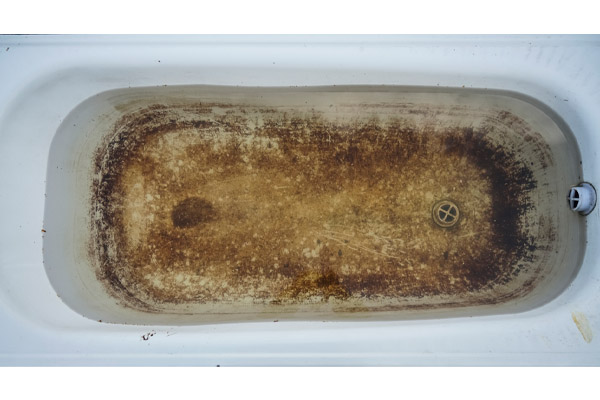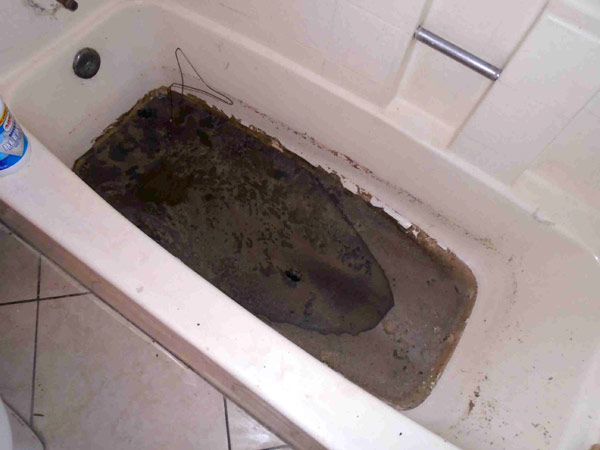Exploring the Causes of Drainage Backflow in the Bathtub
Exploring the Causes of Drainage Backflow in the Bathtub
Blog Article
Any individual has got their own individual notions on the subject of What to Do if Sewage Starts Coming Up Through Your Bathtub.

Sewer backup in the bath tub can be a traumatic and unhygienic issue for any kind of homeowner. Not only is it troublesome, however it also positions serious health dangers and suggests underlying problems with the plumbing system. Recognizing why sewage is coming up via the tub is essential for taking proper activity to deal with the trouble effectively.
Intro to the Problem
Typical Factors for Sewer Backup
Obstructions in the Sewage System Line
One of one of the most usual causes of sewer backup is a clog in the drain line. This can occur as a result of the build-up of particles, grease, or foreign things in the pipes, preventing appropriate circulation and causing sewage to back up into your tub.
Tree Root Breach
Tree roots looking for wetness and nutrients can penetrate sewer lines through small fractures or joints. Over time, these origins can expand and increase, creating substantial damages to the pipes and leading to sewage back-up problems.
Comprehending the Issue
When sewage starts backing up right into the tub, it's a clear indication of a problem with the drain system. The wastewater that must be moving far from your home is rather finding its way back into your space, which can result in significant damage and carcinogen.
Possible Causes
Numerous elements can add to sewage backup in the bathtub. From obstructions in the sewage system line to problems with the plumbing framework, determining the root cause is important for finding a remedy.
Aging Facilities
Older homes might have dated plumbing systems that are extra vulnerable to rust, cracks, and wear and tear. As pipes age, they end up being more vulnerable to leaks and clogs, raising the likelihood of sewage back-up incidents.
Heavy Rainfall or Flooding
During durations of heavy rainfall or flooding, the drain system may become overloaded with excess water, triggering back-ups and overflows. This can lead to sewer backing up right into bathtubs and other components inside the home.
Signs of Sewage Back-up
Foul Odors
Undesirable smells emanating from drains or components, especially in the bathroom, might suggest sewage back-up issues. These odors are commonly solid and persistent, indicating an issue that needs instant attention.
Slow Draining Fixtures
Bathtubs, sinks, and toilets that drain gradually or otherwise at all could be experiencing sewer back-up. If several fixtures are influenced concurrently, it's likely that the concern originates from an usual factor, such as the main sewage system line.
Gurgling Sounds
Odd gurgling or bubbling noises coming from drains pipes when water is running in other places in your home are indicative of air trapped in the plumbing system. This air build-up can arise from sewer back-up and should be explored quickly.
Wellness Dangers Related To Sewer Back-up
Contamination of Water Supply
Sewer back-up can contaminate the supply of water in your house, posing a major wellness danger to you and your household. Exposure to infected water can bring about intestinal issues, skin infections, and other diseases.
Mold and mildew Development
Wetness from sewer backup can create ideal problems for mold growth in your home. Mold spores can worsen breathing problems and trigger allergies in delicate people, making prompt cleaning necessary.
Spread of Disease
Sewage has damaging bacteria, viruses, and parasites that can cause a range of diseases, including hepatitis, cholera, and gastroenteritis. Entering contact with sewage or polluted surface areas puts you in jeopardy of infection.
Cleaning Up After Sewer Backup
Sanitation Procedures
Completely decontaminate and sterilize affected areas after sewer back-up to eliminate harmful germs and avoid mold development. Use appropriate cleansing products and protective gear to make certain secure and effective cleanup.
Restoration of Influenced Areas
Fix any type of damages to floor covering, walls, or fixtures brought on by sewer back-up. Depending on the extent of the damage, you may need to change carpets, drywall, or various other materials to restore your home to its pre-loss condition.
Immediate Actions to Take
Turning Off Water System
In the event of sewage back-up, it's essential to shut off the supply of water to avoid further contamination and damages. Situate the primary water shutoff valve in your house and shut it off till the problem can be settled.
Contacting a Specialist Plumber
Managing sewage backup is not a DIY job. Get in touch with a certified plumber with experience in handling sewage-related issues to analyze the scenario and carry out needed repairs or cleanups.
Avoiding Contact with Polluted Water
Until the sewer back-up is settled, stay clear of contact with infected water to avoid the spread of microorganisms and virus. Put on safety equipment if you need to remain in the afflicted area and wash your hands completely afterward.
Preventive Measures
Regular Upkeep of Sewer Lines
Set up regular inspections and maintenance of your sewage system lines to determine and resolve possible concerns before they escalate right into major troubles. This can include cleaning out debris, inspecting for tree root invasion, and repairing any damaged pipes.
Mounting Backwater Shutoffs
Consider installing backwater shutoffs in your plumbing system to prevent sewer from receding into your home during durations of heavy rainfall or flooding. These valves immediately close when water starts backing up, securing your building from contamination.
Correct Disposal of House Waste
Prevent purging anything apart from bathroom tissue and human waste down the bathroom to stop clogs and obstructions in the sewer line. Dispose of oil, oil, and other household chemicals properly to lessen the risk of plumbing issues.
Why Is Water Backing Up in My Bathtub When I Flush My Toilet?
What to do about a sewer line clog
First, don’t bother with plunging. No amount of plunging will dislodge the clog in a sewer line. The clog is too far away. Plungers are for clogs in the toilet itself, not the sewer line. Plus, the most likely causes of a sewer clog are:
Tree roots Flushed toys or feminine products Grease buildup Those items don’t move easily. And in the case of tree roots, the roots need to be cut out of the pipe and the pipe will need to be repaired.
You’ll need a closet auger. A closet auger is a type of plumber’s snake with a protective cover to keep from scratching the delicate porcelain toilet. If the clog is further down, you may need to remove the toilet or use one of your cleanouts to get to the clog.
We also recommend doing a video inspection of the drain to ensure that the cause of the clog has been completely removed. Otherwise, you could have the same problem again in a few days or weeks.
https://mspplumbingheatingair.com/blog/why-is-water-backing-up-in-my-bathtub-when-i-flush-my-toilet

I'm certainly very enthusiastic about Water Coming up Bathtub Drain and I hope you enjoyed reading my blog posting. Are you aware of someone else who is involved in the subject? Do not hesitate to promote it. Bless you for being here. Don't forget to pay a visit to our website back soon.
Details Here
Report this page